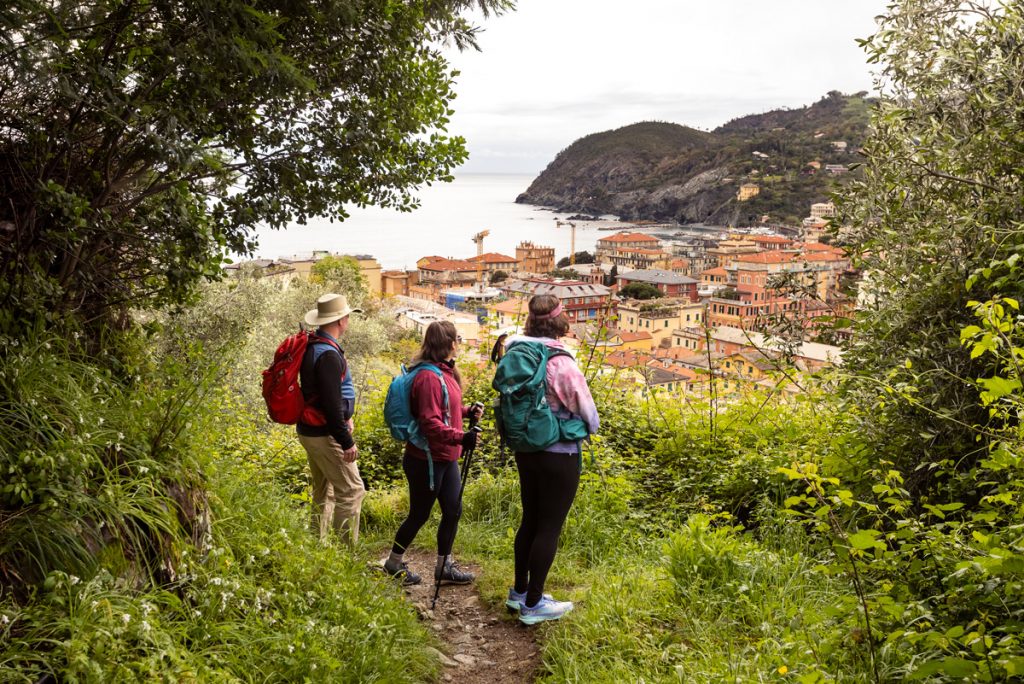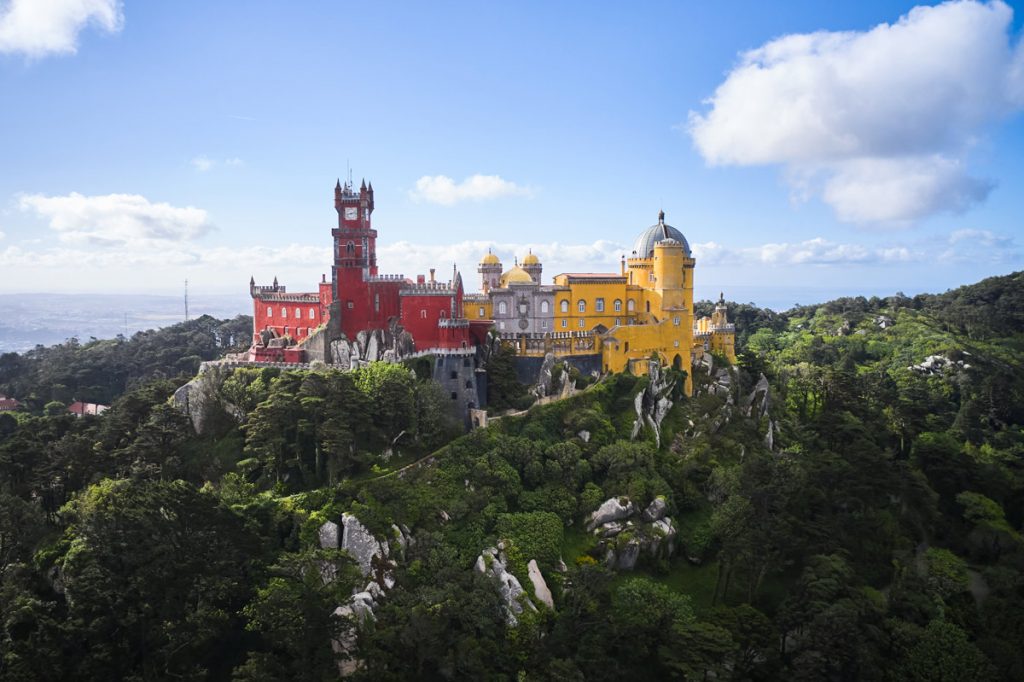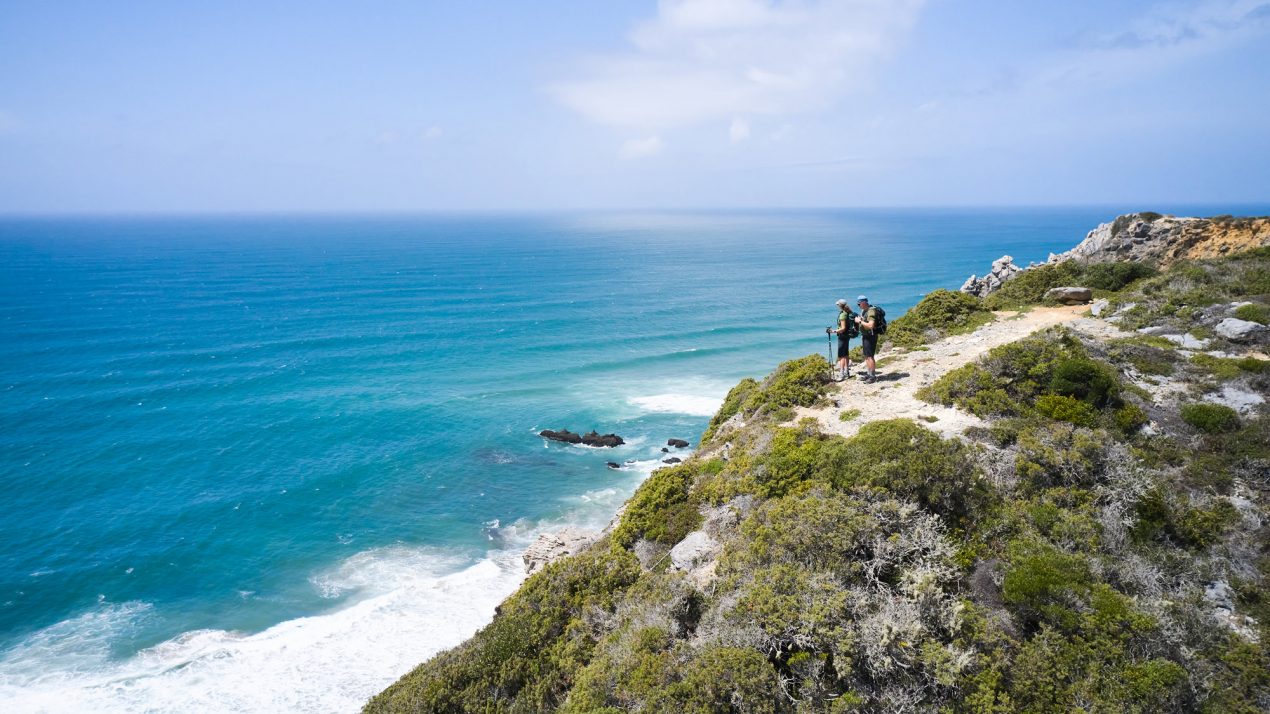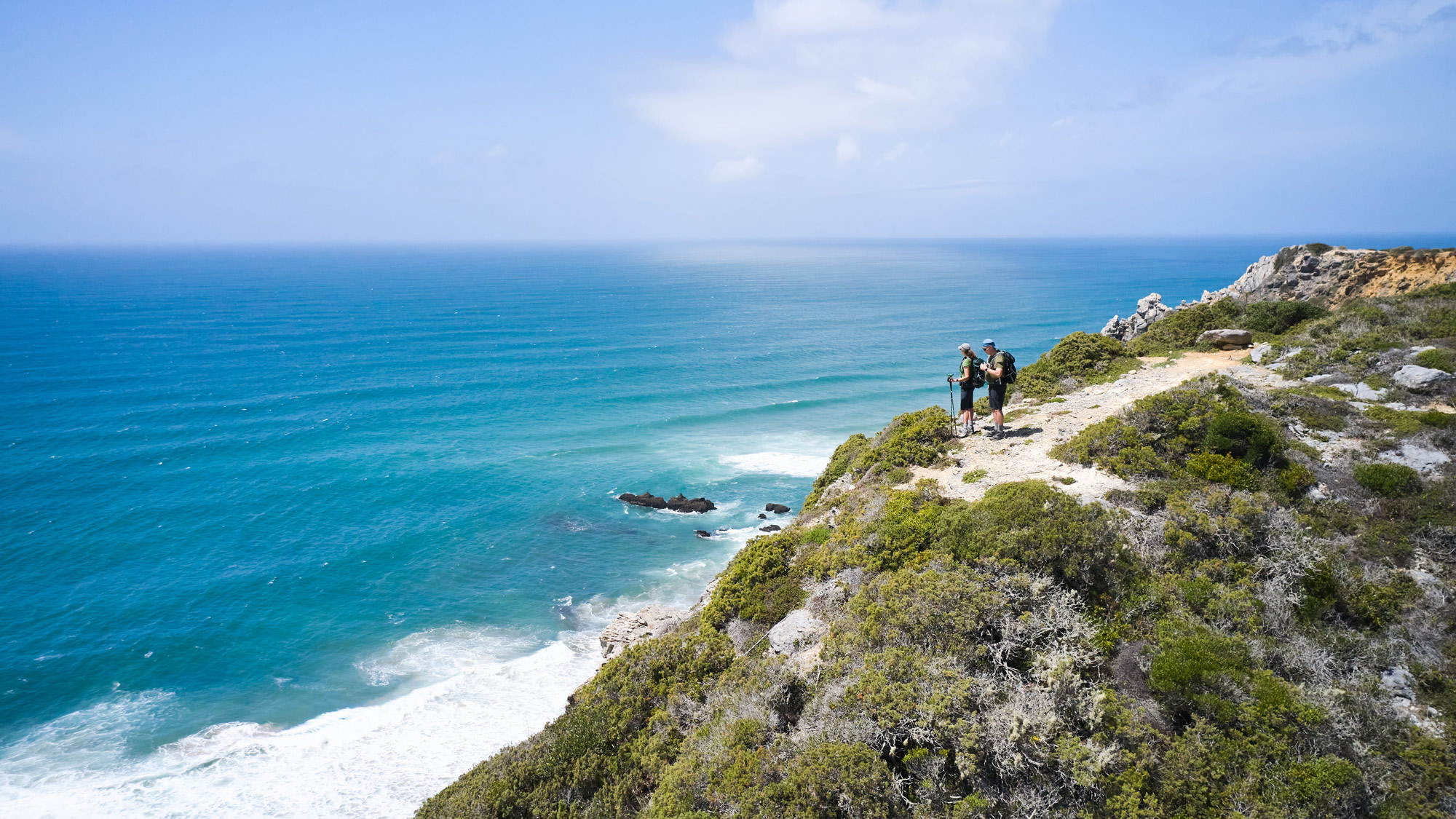Walking Trip Q&A
Why a Walking Trip Should Be on Your Bucket List
Are walking trips the best form of slow travel? An expert makes a sure-footed case.
By Phoebe Neuman
One of our favorite trends to emerge over the last few years is the slow-travel mindset—resisting the urge to jam-pack itineraries and instead being more intentional with our time in each place we visit. One of the very best ways to do that? Walking.
Long popular in Europe, walking (or hiking) trips—in which you walk from point to point, exploring smaller villages and off-the-beaten-path sites and soaking up the natural beauty of the environment along the way—are starting to gain traction with American travelers. That walking trips are gaining people’s attention makes sense: whether rigorous or leisurely, they can satisfy the real urge to slow down—and stick to your wellness goals—while traveling.
To help us understand the increasingly popular walking trip—and how to get prepared for one—we tapped Lori Goodwin, a walking-trip expert who has designed more than her fair share of self-guided hiking and biking trips for tour operator Macs Adventure. Here, she shares her insights into what makes these journeys so special, her tips for choosing the right itinerary, and her must-haves for her pack while on the trail.

FTT: What makes a walking trip different from hiking? Is there a difference?
LG: The terms walking and hiking are often used interchangeably, especially [on] different sides of the Atlantic. In the U.S., people tend to say “hiking,” while in Europe, “walking” is more commonly used; but at Macs Adventure, we see them as two sides of the same coin. In our world, what really sets them apart is the style and purpose of the trip.
A self-guided walking/hiking trip is about more than just covering ground. It’s immersive, cultural, and flexible. You’re moving through a landscape at your own pace, with the freedom to stop for a scenic lunch, a wine tasting, or a conversation with a local. It’s active travel, yes, but with intention and room for discovery.
We offer a range of trip types to suit different travel styles and levels of activity. Our Slower Adventures are ideal for those who want shorter daily walks with more time to explore and soak up the local charm. Classic Routes, like the Tour du Mont Blanc or West Highland Way, suit more experienced walkers looking for iconic, point-to-point journeys. And then we have pilgrimages like the Camino de Santiago, where the journey is as much about personal growth and reflection as it is about the trail.
So, whether you call it hiking or walking, what matters is what type of adventure you are looking for!
FTT: Walking trips have long been popular in Europe. Why do you think more American travelers are becoming interested in them?
LG: We’re seeing a real shift in what people want from their travels. It’s no longer just about ticking off the bucket list; it’s about connection, meaning, and seeing beyond the surface of a destination. Hiking trips are the perfect antidote to fast-paced travel. For many Americans, it’s also a fresh alternative to beach vacations or crowded city breaks—something active but restorative. And let’s be honest, after a few years of feeling a bit cooped up, people are craving the great outdoors in a more intentional way.
Travelers want more-immersive travel experiences away from tourist traps and crowds—freedom to explore how they want and in a more sustainable way that benefits local communities. People want to connect with nature and with the places that they’re visiting in a more meaningful way.
FTT: Do you have to be an avid hiker or an athlete to enjoy a walking trip?
LG: Not at all! That’s one of the biggest myths we love to bust. Macs offers a range of itineraries—from gentle walks to more challenging trails—and you don’t need to be a triathlete to enjoy them. If you can handle a few miles a day, especially with the promise of interesting stops along the way, a great meal, and a comfy bed at the end, you’re in the right place.
And, because all of our trips are self-guided, there are no groups to keep up with or guides setting the pace or schedule. You’re free to walk your way, on your terms.
FTT: What types of people do you see booking walking trips with Macs Adventure? Has this demographic changed recently in any interesting ways?
LG: Many of our travelers are well into their 70s and 80s, proving that age is absolutely not a barrier when it comes to self-guided adventure. We see everything from couples or small groups of friends to multigenerational families with older kids. We also see lots of solo adventurers too, and in particular solo females, which is a growing trend!
Part of what makes Macs so accessible is the peace of mind we offer: our 24-7 telephone support, app-based navigation with detailed route notes, and daily luggage transfers all help create that sweet spot between freedom and reassurance. You’re never in a big group or following a guide, but you’re also never truly on your own. That balance is what gives so many of our travelers, especially first-timers, the confidence to go for it.

Photo courtesy of Macs Adventure.
FTT: Talk us through the logistics of a walking trip. How does each day unfold? What do you do with your luggage as you go from one destination to the next?
LG: I always recommend starting the day by checking the Macs Adventure app—reviewing route notes, daily mileage, and planning stops for coffee, lunch, or sightseeing (unless you’ve done all that the night before, which I often do). Then, make sure your phone and devices are charged and that maps are downloaded for offline use—always a good habit, just in case service gets spotty on the trail.
Before setting off, you’ll pack your daypack with the essentials, zip up your main luggage (which I like to pack up the night before), and leave it at reception. Our bag transfer team takes it from there, and your luggage will be waiting for you at your next accommodation, and sometimes even placed directly in your room.
After breakfast and maybe collecting a packed lunch if you pre-ordered it, you’ll head to the trailhead and start the day’s walk. I usually aim to arrive at my next stop around 4:30, 5 p.m.—plenty of time to settle in and relax, knowing my bags are already there waiting for me.
FTT: What’s the best way to prepare for a walking trip? Do you need to do any training before departure?
LG: The biggest tip is to choose the right trip for you and for anyone you’re travelling with. Make sure the daily mileage and elevation gain match everyone’s fitness level and comfort zone. Macs has options for all levels, from leisurely Slower Adventures to more demanding alpine routes and everything in between.
Personally, I like to start ramping up my daily walks a couple of months in advance, gradually building up to just under the trip’s average daily mileage. On weekends, I’ll do one longer or more challenging hike, either in distance or elevation. A few weeks before the trip, I try to walk two big days back-to-back to build up stamina and simulate the real deal. I also always take my daypack to get used to the weight and feel. And if I’m using new boots or shoes, they’ve absolutely got to be broken in well in advance. Tried and tested is the way!
FTT: What should always be in your suitcase (or backpack) if you’re setting off on a walking trip?
LG: I start with the basics: broken-in footwear, a comfortable daypack, moisture-wicking layers, a wide-brimmed hat, sunscreen, and prescription sunglasses if you need them. An external battery pack is a must (I never want to risk my phone dying mid-route), and I always make sure I’ve got international roaming sorted.
On the quirkier side, I bring reusable, locking containers for trail snacks (no plastic Ziplocs for me!), and I always stash a few favorite prepackaged treats and electrolyte sachets I know work for me. Little comforts can go a long way when you’re out on the trail.
Our packing lists are really thought-out and specific to each trip, so I always recommend you pay close attention to those.


